advancing the mitigation of Climate Change and Global Warming through Geoengineering education and research
Ecosystem Restoration
Ecosystem restoration is a geoengineering or climate engineering approach to mitigate Climate Change by removing carbon dioxide from the atmosphere and storing it (i.e., carbon sequestration) in the plants, animals and environment (e.g., organic matter in soils, etc.) of repaired or improved natural communities. Ecosystem restoration is perhaps one of the best climate mitigation solutions because, by restoring ecosystems, we can naturally remove carbon dioxide from the atmosphere and oceans, reverse Global Warming and ocean acidification, conserve biodiversity, and restore degraded lands and ecosystems.
The Problem of Land Degradation
Land degradation is a “pervasive, systemic phenomenon occurring in all parts of the world” (IPBES, 2018). Because land degradation is a major contributor to Climate Change, it is an ideal target for ecosystem restoration and climate mitigation. Between 2000 and 2009, land degradation (e.g., deforestation, and impacts to soils and peatlands) added 3.6–4.4 billion tonnes of CO² per year into the atmosphere. Deforestation alone is responsible for about 10% of all human-induced greenhouse gas emissions (IPBES, 2018).
Land degradation poses a grave threat to human civilization because it not only contributes to Global Warming, but also leads to the loss of essential resources (e.g., food and water) and environmental services (e.g., air and water filtration, carbon sequestration, support of the water cycle, etc.) that sustain our societies. In addition, land degradation is causing the loss of biodiversity and ecosystems, and is leading to a sixth mass extinction of life on the planet (a potential 38–46% loss of biodiversity by 2050/IPBES, 2018). The main direct drivers of land degradation are the expansion of crop and grazing lands into natural ecosystems, unsustainable agricultural and forestry practices, climate change, development and urban expansion, and extractive industries (e.g., mining for coal and minerals such as iron ore; and oil and natural gas extraction). The above direct drivers are, in turn, fueled by high consumptive lifestyles in developed countries, rising consumption in developing countries and human population growth (currently 7.7 billion people) (IPBES, 2018).
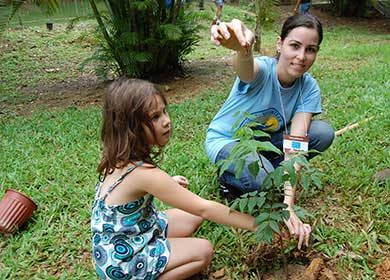
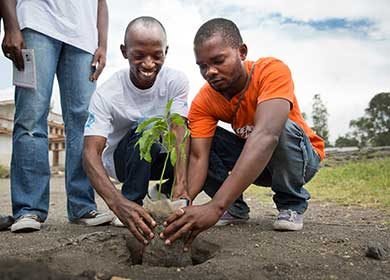
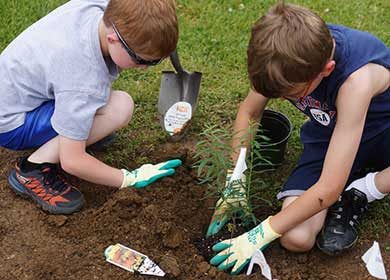
In the last 300 years, agricultural expansion and logging have resulted in the global loss of 7 to 11 million km² of forest, an area larger than Australia or the continental United States (Foley et al., 2005). In that same period, pastureland increased from 5.3 to 33 million km² (Asner et al., 2004) and 87% of all wetlands around the planet disappeared (Davidson, 2014). From 1981 to 2003, 24% of land area of the Earth was degraded (Bai et al., 2008). Degraded areas included cropland (19%), broad-leaved forest (24%), needle-leaved forest (19%) and upland shrublands (12%). Most of the degradation of lands occurred in central and southern Africa, South-East Asia, South China, north-central Australia, Siberia, and North America (in taiga ecosystems/Bai et al., 2008).
Currently, the Intergovernmental Science-Policy Platform on Biodiversity and Ecosystem Services (IPBES/an organization created by the United Nations) estimates that less than a quarter of the Earth’s land surface is relatively free from human impacts. Each year, approximately 120,000 km² of land continues to be degraded. By 2050, the IPBES predicts that less than 10% of the Earth’s land will remain substantially free of direct human impact. This remaining intact land will be located in areas that are unsuitable for human use (deserts, mountainous areas, tundra and polar regions) (IPBES, 2018).
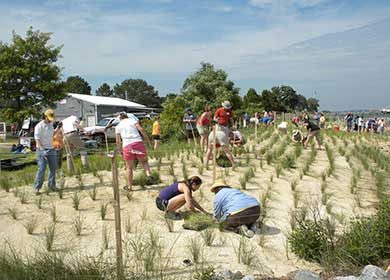
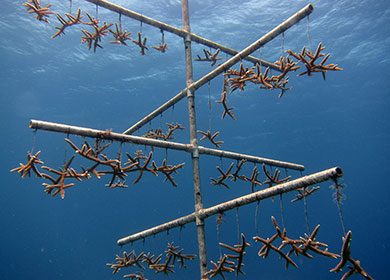
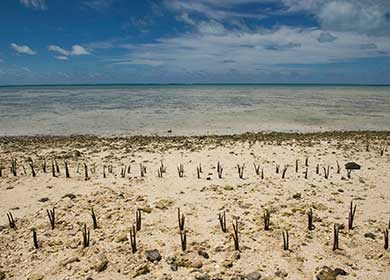
What is Ecosystem Restoration?
As mentioned above, many ecosystems around the world have been destroyed or damaged by development, agriculture, grazing, deforestation, mining, pollution and other large-scale anthropogenic impacts. These impacts have not only affected natural plant and animal communities but also the ecological processes that shape or control these communities.
To conserve our natural communities and the products and services they provide to our civilization (such as removing carbon dioxide from our atmosphere), ecologists, biologists and environmental scientists have developed many methodologies to repair and rebuild ecosystems and biological communities. Ecosystem Restoration is the act of repairing, rebuilding or restoring degraded or destroyed ecosystems and the ecological processes that support these systems.
For over a century, scientists have developed the capability to restore many valuable ecosystems including grasslands, shrublands, forests, herbaceous and forested freshwater wetlands, salt marshes, mangrove forests, oyster beds, seagrass meadows, coral reefs, and entire watersheds and landscapes.
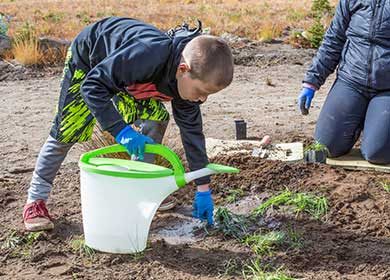

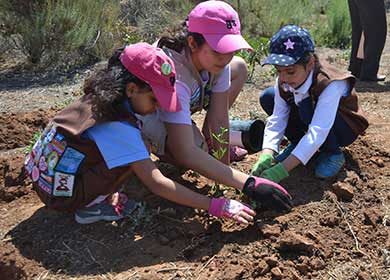
How do you restore or create natural ecosystems?
Central to the science of ecosystem restoration are the concepts of “ecological succession” and the “climax community” developed, most notably, by Frederic Clements. Ecological succession is the process of how biological communities change and develop over time. A climax community is the final stage of ecological succession. The assemblage of plants and animals that form a climax community is largely determined by the abiotic environmental factors that shape the system during ecological succession.
In terrestrial ecosystems, the abiotic environmental factors of sunlight, rainfall (precipitation), temperature, wind, lightning, topography/hydrology and soil characteristics all interact to shape ecological succession and determine the characteristics of the climax community. In aquatic ecosystems, light, water clarity, depth, temperature, flow, salinity, acidity, nutrients and substrate characteristics are the dominant environmental factors that determine the climax.
In natural ecosystems, these abiotic environmental factors interact with the diverse and often competing plants and animals of the region to determine what the climax community will be. They will, for example, determine whether an ecosystem is an upland versus a wetland, a grassland versus a forest, a seagrass meadow versus a subtidal soft bottom, or a tropical coral reef versus a temperate hard bottom marine community.
Successful ecosystem restoration projects have designs that closely align with or match the true or natural climax of the area or fall within a stage of the natural successional trajectory. In other words, climax communities are overwhelmingly determined by abiotic environmental factors and these factors will ultimately push the system to form the climax community. Misguided ecosystem restoration projects that restore areas with the wrong plants and animals are short-lived in nature and will, with time, succeed and change into the natural climax community for that area. To be effective, restoration ecologists need to identify the dominant environmental factors that shape ecological succession and restore with species that will help the system reach its natural climax community.
Ecosystem Restoration should be considered as a way humans can help accelerate natural succession. Without human intervention, succession will naturally occur until the climax community is reached (provided that plants (and seeds) and animals are in the area and natural dispersal mechanisms are still intact). Ecosystem Restoration is a way humans can assist nature in creating climax communities. By doing this humans can use newly restored ecosystems to remove carbon dioxide from the atmosphere and oceans and store it for long periods of time. In addition, people will benefit from all the other ecosystem services natural communities provide such as clean water and food.
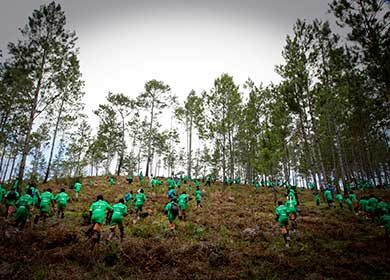
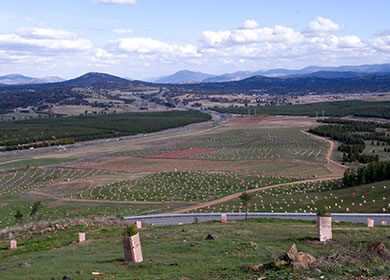
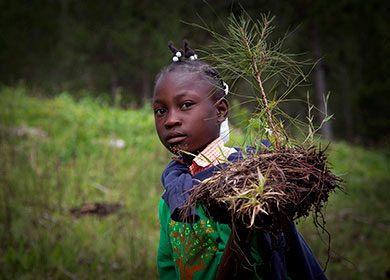
References
- Asner, G.P., Elmore, A.J., Olander, L.P., Martin, R.E. and Harris, A.T., 2004. Grazing systems, ecosystem responses, and global change. Annu. Rev. Environ. Resour., 29, pp.261-299.
- Bai, Z.G., Dent, D.L., Olsson, L. and Schaepman, M.E., 2008. Proxy global assessment of land degradation. Soil use and management, 24(3), pp.223-234.
- Davidson, N.C., 2014. How much wetland has the world lost? Long-term and recent trends in global wetland area. Marine and Freshwater Research, 65(10), pp.934-941.
- Foley, J.A., DeFries, R., Asner, G.P., Barford, C., Bonan, G., Carpenter, S.R., Chapin, F.S., Coe, M.T., Daily, G.C., Gibbs, H.K. and Helkowski, J.H., 2005. Global consequences of land use. science, 309(5734), pp.570-574.
Li, Q., Yu, P., Li, G., Zhou, D. and Chen, X., 2014. Overlooking soil erosion induces underestimation of the soil C loss in degraded land. Quaternary International, 349, pp.287-290.